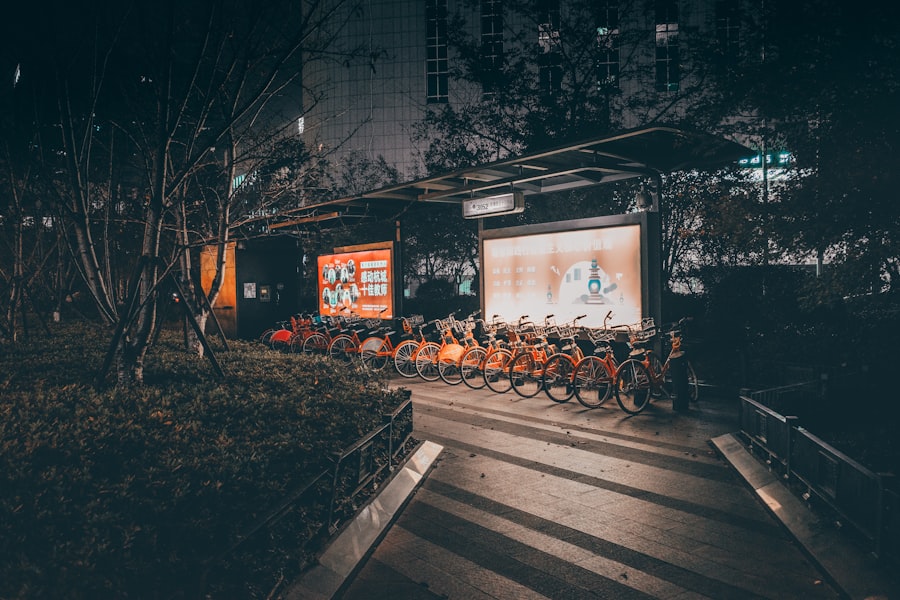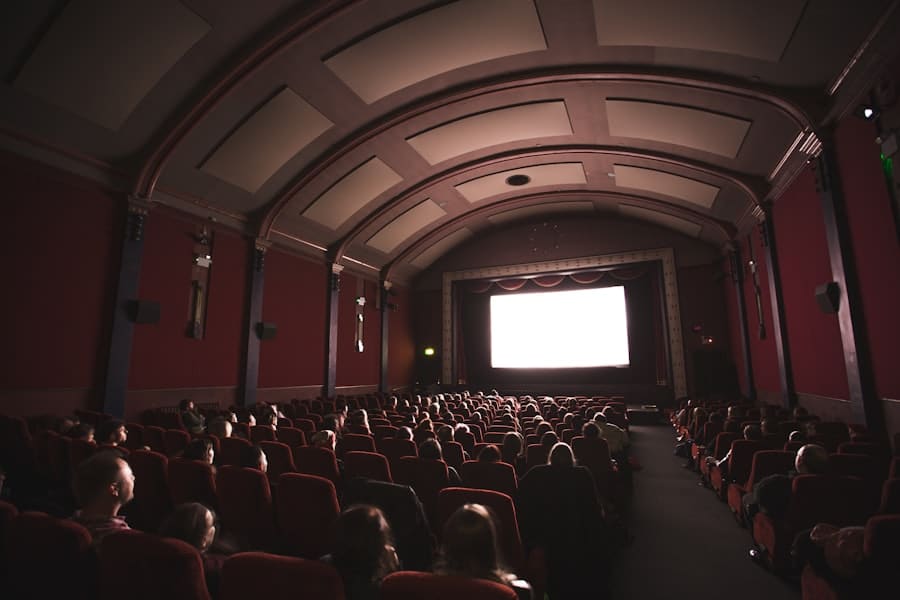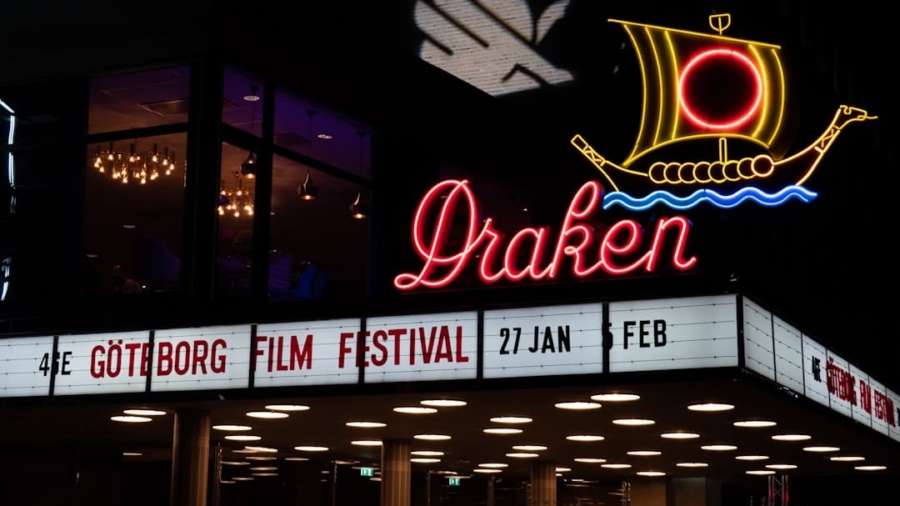In recent years, the landscape of film festivals has undergone a significant transformation with the emergence of virtual reality (VR) as a compelling medium for storytelling. The rise of VR film festivals can be traced back to the increasing accessibility of VR technology and the growing interest in immersive experiences. Events such as the Sundance Film Festival, Tribeca Film Festival, and Venice Film Festival have embraced VR, showcasing a diverse array of projects that push the boundaries of traditional filmmaking.
These festivals not only provide a platform for established filmmakers but also serve as incubators for emerging talent, allowing creators to experiment with new narrative forms and technologies. The proliferation of VR film festivals has also been fueled by advancements in hardware and software, making it easier for creators to produce high-quality content. With the advent of affordable VR headsets and user-friendly development tools, filmmakers are no longer limited to conventional storytelling techniques.
Instead, they can explore interactive narratives that engage audiences in unprecedented ways. As a result, festivals dedicated to VR have sprung up around the globe, each contributing to a vibrant ecosystem that celebrates innovation in storytelling. This shift reflects a broader trend in the film industry, where traditional boundaries are increasingly blurred, and new forms of expression are welcomed.
Key Takeaways
- VR film festivals are gaining popularity and recognition in the film industry, providing a platform for immersive storytelling and cutting-edge technology.
- Global participation in VR film festivals is increasing, leading to greater diversity in storytelling and representation of different cultures and perspectives.
- VR technology is revolutionizing filmmaking by offering new tools and techniques for creating immersive and interactive experiences for audiences.
- VR film festivals are creating opportunities for filmmakers to engage with audiences in unique and immersive ways, enhancing the overall viewing experience.
- VR film festivals are fostering networking and collaboration opportunities for creators, leading to the development of innovative and groundbreaking VR content.
Global Participation and Diversity
One of the most exciting aspects of VR film festivals is their ability to foster global participation and celebrate diversity in storytelling. Filmmakers from various cultural backgrounds are drawn to the immersive potential of VR, allowing them to share their unique perspectives and experiences with a global audience. This democratization of storytelling is particularly evident in festivals that prioritize inclusivity, showcasing works from underrepresented communities and marginalized voices.
By providing a platform for diverse narratives, these festivals enrich the cinematic landscape and challenge dominant narratives that have historically prevailed in mainstream cinema. Moreover, the global nature of VR film festivals encourages cross-cultural collaboration among creators.
This exchange of ideas not only enhances the quality of the work produced but also fosters a sense of community among creators who are passionate about pushing the limits of storytelling. As VR technology continues to evolve, the potential for diverse voices to be heard and celebrated will only increase, further enriching the tapestry of global cinema.
The Impact of VR Technology on Filmmaking

The advent of VR technology has fundamentally altered the way filmmakers approach storytelling. Unlike traditional film, which relies on a linear narrative structure, VR allows for a more immersive and interactive experience. Filmmakers must now consider how audiences will engage with their work in a three-dimensional space, leading to innovative approaches to narrative design.
For instance, creators can craft stories that allow viewers to explore environments at their own pace, making choices that influence the direction of the narrative. This shift necessitates a rethinking of character development, pacing, and audience engagement. Additionally, VR technology has opened up new avenues for visual storytelling.
The ability to create fully realized 360-degree environments enables filmmakers to transport audiences to places they may never have the opportunity to visit in real life. For example, projects like “The Hangman at Home: A Ghost Story” utilize VR to create hauntingly immersive experiences that draw viewers into the narrative world. The impact of this technology extends beyond aesthetics; it challenges filmmakers to think critically about how they can leverage immersion to evoke emotional responses from their audience.
As creators continue to experiment with VR, we can expect to see even more groundbreaking approaches to storytelling that redefine the cinematic experience.
Creating Immersive Experiences for Audiences
At the heart of VR filmmaking lies the goal of creating truly immersive experiences for audiences. Unlike traditional films that present a passive viewing experience, VR invites viewers to become active participants in the narrative. This interactivity can take many forms, from simple gaze-based interactions to complex decision-making scenarios that shape the story’s outcome.
For instance, projects like “Wolves in the Walls” allow viewers to interact with characters and environments in ways that deepen their emotional connection to the story. The immersive nature of VR also has profound implications for audience engagement. By placing viewers inside the narrative world, filmmakers can evoke a sense of presence that traditional media cannot replicate.
This heightened level of engagement can lead to more profound emotional responses and a lasting impact on viewers. For example, experiences like “Notes on Blindness” use sound design and spatial audio to create an intimate portrayal of blindness, allowing audiences to empathize with the protagonist’s journey in a deeply personal way. As filmmakers continue to explore the potential of VR, they will undoubtedly find new ways to captivate audiences and create unforgettable experiences.
Networking and Collaboration Opportunities
VR film festivals serve as vital networking hubs for creators, providing opportunities for collaboration and knowledge exchange. These events bring together filmmakers, technologists, artists, and industry professionals who share a passion for immersive storytelling. The informal atmosphere of festivals encourages attendees to connect and share ideas, leading to potential partnerships that can elevate their work.
For instance, many festivals host panels and workshops where creators can learn from industry leaders and gain insights into emerging trends in VR filmmaking. Moreover, networking opportunities extend beyond individual connections; they often lead to collaborative projects that push the boundaries of what is possible in VR. Filmmakers may team up with game designers, sound artists, or visual effects specialists to create innovative experiences that blend different disciplines.
This interdisciplinary approach not only enriches the creative process but also fosters a sense of community among creators who are dedicated to exploring new frontiers in storytelling. As VR continues to gain traction within the film industry, these networking opportunities will play a crucial role in shaping the future of immersive cinema.
The Future of VR Film Festivals

As technology continues to advance and audiences become more familiar with VR experiences, the future of VR film festivals looks promising. These events are likely to evolve in response to changing industry dynamics and audience expectations. For instance, we may see an increase in hybrid festivals that combine physical screenings with virtual components, allowing for greater accessibility and participation from global audiences.
This shift could democratize access to festival content, enabling more people to engage with innovative works from around the world. Furthermore, as VR technology becomes more integrated into mainstream entertainment, we can expect an expansion in the types of projects showcased at these festivals. Beyond traditional narrative films, we may see an influx of interactive documentaries, educational experiences, and experimental art installations that leverage the unique capabilities of VR.
This diversification will not only attract a broader audience but also encourage creators to push their artistic boundaries further. The future of VR film festivals holds immense potential for innovation and creativity as they continue to adapt to an ever-changing landscape.
Challenges and Opportunities for VR Creators
While the rise of VR film festivals presents exciting opportunities for creators, it also comes with its own set of challenges. One significant hurdle is the technical complexity associated with producing high-quality VR content. Filmmakers must navigate various aspects such as 3D modeling, spatial audio design, and user interaction mechanics—skills that may be outside their traditional filmmaking expertise.
This technical barrier can be daunting for many creators, particularly those who are accustomed to conventional filmmaking practices. Additionally, funding remains a critical challenge for many VR projects. While interest in immersive storytelling is growing, securing financial support for innovative ideas can be difficult due to the perceived risks associated with new technologies.
However, this challenge also presents an opportunity for creators to seek out alternative funding models such as crowdfunding or partnerships with tech companies invested in advancing VR content. By embracing these challenges head-on and leveraging available resources, creators can carve out their niche within this burgeoning field.
The Role of VR in Shaping the Future of Cinema
The integration of VR technology into filmmaking is poised to reshape the future of cinema in profound ways. As audiences increasingly seek out immersive experiences that engage their senses and emotions, filmmakers will need to adapt their storytelling techniques accordingly. The rise of VR challenges traditional notions of narrative structure and audience engagement, prompting creators to explore new ways of connecting with viewers on a deeper level.
Moreover, as VR becomes more mainstream, it has the potential to influence other areas of cinema beyond just storytelling. For instance, advancements in virtual production techniques could revolutionize how films are made by allowing filmmakers to visualize scenes in real-time using virtual environments. This shift could lead to more efficient production processes and greater creative freedom for directors and cinematographers alike.
In conclusion, while challenges remain for creators navigating this evolving landscape, the opportunities presented by VR technology are vast and varied.
In recent years, the rise of virtual reality (VR) has revolutionized the way we experience films, with VR film festivals becoming a significant platform for global creators to showcase their work. These festivals are not only attracting filmmakers from around the world but are also pushing the boundaries of storytelling and audience engagement. A related article that delves into the broader impact of multimedia efforts in the digital age is The Verge is an Ambitious Multimedia Effort Founded. This article explores how multimedia platforms are evolving and influencing various creative industries, including VR, by providing new opportunities for creators to reach diverse audiences.
FAQs
What are VR film festivals?
VR film festivals are events that showcase virtual reality films and experiences created by filmmakers and creators from around the world. These festivals provide a platform for VR content to be exhibited and celebrated, allowing audiences to immerse themselves in the world of virtual reality storytelling.
How are VR film festivals attracting global creators?
VR film festivals are attracting global creators by providing a unique and innovative platform for showcasing their work to a global audience. These festivals offer opportunities for networking, collaboration, and exposure to industry professionals, which can help creators gain recognition and support for their VR projects.
What are the benefits of participating in VR film festivals for creators?
Participating in VR film festivals can provide creators with the opportunity to showcase their work to a diverse and international audience, gain industry recognition, network with other creators and industry professionals, and potentially secure funding or distribution deals for their VR projects.
How are VR film festivals contributing to the growth of the VR industry?
VR film festivals are contributing to the growth of the VR industry by promoting and celebrating VR content, fostering creativity and innovation in VR storytelling, and providing a platform for creators to showcase their work to a global audience. These festivals also help to raise awareness and generate interest in VR technology and its potential applications in entertainment and storytelling.

